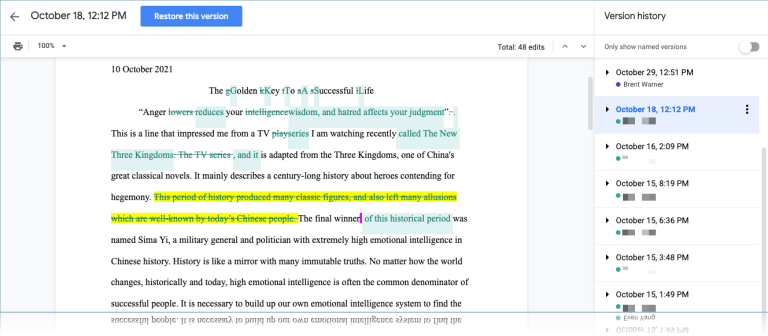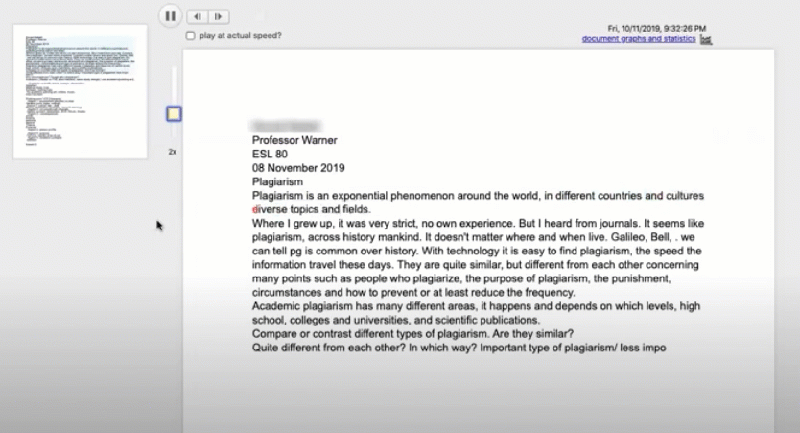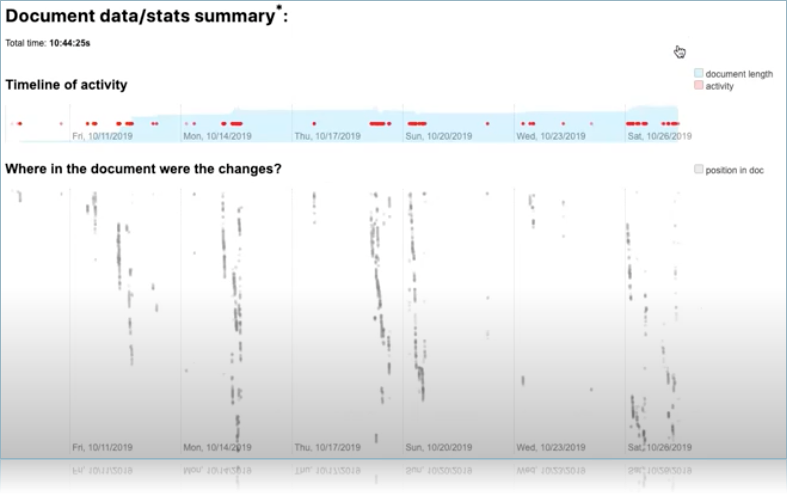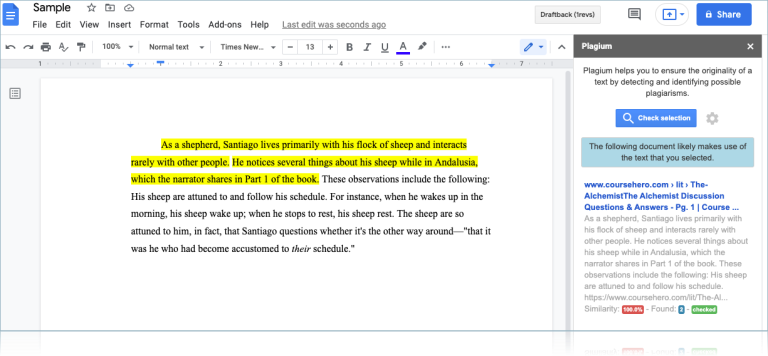Strategies to Reduce Plagiarism and Increase Engagement
Plagiarism: scourge of the writing class and bane of teachers’ existence. Whether students are lifting others’ words accidentally or on purpose, there’s always something that comes up that puts us into a position of questioning the authenticity of some portion of a submission. While no teacher got into the profession to police student work, sometimes we find ourselves stuck between a rock and a hard place, and we have to do some detective work.
Additionally, our students may not understand the concepts of plagiarism, or they may have simply made a mistake in the writing process. With a caring approach, a few tech tools, and some improved pedagogical practices, we can all reduce our time spent chasing down problems, and instead we can get back to the good work of guiding our students to writing success.
First and foremost, I strongly suggest that you move your workflow and your students’ workflow to Google Docs. I know, I know—I can already hear the groans of dedicated Microsoft Word users, but Word simply hasn’t caught up with what it means to be a connected learner. Google was years ahead of the ball with collaborative writing, and despite being the undisputed king for many years, Microsoft has struggled to match what Google offers. While I support any competition that Microsoft may bring to the field, they’re just not there yet. Additionally, Google Docs has a lot simpler features, making it less bloated and easier to understand for the average nonpower user. If you’d prefer not to consider what Google has to offer, feel free to skip below to the “Techniques” section for some hints on reducing plagiarism before it starts.
Tools
Version History
At the top of the Google Docs Menu Bar, after “Help,” you’ll find a convenient notification of the last time there was an edit on the doc. When you click on that notification, you can see a minute-by-minute breakdown of the changes made on the document. A brief glance through the history can be insightful to see how much time a student spent on a document. If your student spent 3 minutes on a two-page essay, you can almost guarantee a “cut & paste” job. That doesn’t mean that a student couldn’t have written their work elsewhere and plugged it into the doc for submission, but in my class, the rule is every word from first to last has to be written in Google Docs. This alone has done wonders to defer temptation for many students to “take the easy way out.” But if you’re looking to get more granular, there are ways.

Version History provides a quick way to see the changes a student has made to their work.
Draftback
Draftback has been a longtime favorite for me as it’s basically Version History on steroids. Draftback allows a teacher to see how many revisions a student has done, also letting you see a word-by-word playback of everything that was written on the doc. You can actually watch the whole document written after the fact, pausing, speeding up, and slowing down at any moment in the writing process. For a writing teacher, this is the equivalent of a coach rewinding and fast forwarding a tape of players on the field to see exactly where things went right, and where they may have gone wrong.

Revisit the writing process with Draftback
Draftback’s second key feature is the heatmap. It will show you a visual representation of the document from the top to the bottom vertically, and then spanning across time horizontally. This can help the teacher see if the student spent time revising their work, returning to previous ideas and language for updates, or if something was written perfectly (*ahem* suspiciously) from the first word to the last.

This heatmap shows where the student revisited their paper over and over again across 2 weeks of writing.
While some find Draftback to be a little too Big Brother for their tastes, I find that showing it to students early on helps them recognize my expectations of good, thoughtful writing. Additionally, I can use it in conferences with students to talk about their writing process and discuss what is and what isn’t working for them.
Plagium
Sometimes you’re not trying to break down the entire writing process, but you just have a sentence or two that are nagging at you. Maybe they’re written a little too well, or maybe the phrasing seems familiar. In these cases, you may be tempted to copy and paste the section into Google. This can work, but gets a bit tedious. Luckily, there are a number of Google Doc Add-Ons like Plagium to help you out. With Plagium, you can simply highlight a sentence or two, and click a button to scan it against publicly available content on the internet. Will it catch everything? Probably not, but a quick click can calm a suspicious mind and let you get on with what you really care about in their paper.

The highlighted text shows up in Plagium with a 100% similarity score
Techniques
The Personal Interest Venn Diagram
One of the best ways to reduce plagiarism is to customize the writing prompts to match the specific interests of your students, and it’s easier than you may think. At the beginning of the semester, you can send out a survey (easily made in Google Forms) asking students to tell you about them. Make sure to include a wide variety of questions: Favorite athletes, actresses, musicians, movies, restaurants, cities, and so on. At the beginning of the semester, this can serve as a great get-to-know-you activity, but later on you have a wealth of custom information that can guide your students to talk about the topic in a way that resonates with them.
If you’re reading a book, you can make a prompt that challenges students to compare the protagonist with *FAVORITE ACTRESS* in a movie of their choice. If you’re teaching how to make a polite complaint, you can have them write to *FAVORITE RESTAURANT* in a way that communicates their opinion, but also shows they love the food and want to feel comfortable to return. If you’re writing short stories, you can have them imagine a day in the life of *FAVORITE ATHLETE* visiting *FAVORITE CITY*. The options are only limited to your imagination and what you asked them in the survey. As a bonus, you’re guaranteed that the papers you read are all different from one another, ensuring you won’t start to fade out after reading yet another matching essay.

Combine your prompt and students’ passions for a winning paper
Grammar Guarantees
Another way to lower the likelihood of plagiarism is to assign grammar expectations into your paper. Most teachers do this, of course, but a few small tweaks will almost guarantee that it’s faster for students just to do their own work than to find something online. In a given paragraph, assign three specific variations of a grammar pattern you’re working on, and make sure they’re presented in order. For example, if you’re studying subject-verb agreement, you could assign students to make sure the first subject in a sentence is a proper noun. In the next sentence, it could be the matching pronoun, and in the third sentence, a collective noun. In the second paragraph, you might switch things up and make demands of the verbs: Sentence 1 – an irregular verb, Sentence 2 – a verb that starts with the letter “P”, sentence 3 – a regular plural verb.

Make sure students are following grammar expectations in order to ensure custom writing.
Students are most likely to plagiarize when they’re frustrated, bored, or confused. Helping them understand what both quality original writing and plagiarism look like, then providing them with engaging, customized prompts can go a long way to reduce the likelihood of playing the plagiarism game.
Do you have your own tools or techniques to reduce plagiarism? We’d love it if you’d share your thoughts below!

